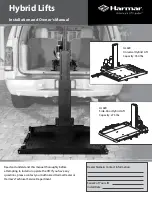
6.3A-68002-A01
S
u
b
je
c
t
to
m
o
d
if
ic
a
ti
o
n
s
Page 7 of 20
LINCOLN GmbH Postfach 1263 D-69183 Walldorf Tel +49 (6227) 33-0 Fax +49 (6227) 33-259
Owners Manual
Cobra 501
NOTE: Valve or sensor designations for left-hand COBRA in
initial position.
Preconditions:
- The belt moves in the prescribed direction.
- The COBRA 501 must be in initial position, i.e. the proxi-
mity switches SA and SR are dampened (switched on) .
- A working cycle of the COBRA is initiated by the proximity
switch SK.
A)The proximity switch SK inductively detects the position of
the chain and, at the same time, connects the YM 5/2-way
solenoid valve. The air pressure acts on the pick-up arm
cylinder (B) and the pick-up arm (C) moves forward.
Note: The sequence of the lubrication cycles (every roller or
every second roller, etc.) depends on the number of rollers and
on the speed of the chain or roller conveyor or on the distance
between the rollers.
B)The roller to be lubricated detects the pick-up arm (C) and
at the same time moves the COBRA 501 exactly in parallel
to the roller.
Note: The pick-up arm and the lubrication head are firmly
installed on a carriage (F) which is placed on a frame (H) in
such a way as to be easily movable.
Cylinder A is pressurized with a dampening pressure via
pressure regulator L and valve YD do make sure that the
carriage does not move with the roller jerkingly but controlled.
The dampening pressure is factory-set and should not be
modified.
C) During the movement the dampening component leaves
the zone of the SA proximity switch. The SA proximity
switch goes into resting position and at the same time
activates the YS 5/2-way solenoid valve. The air pressure
acts on the lubrication head cylinder (D) in such a way that
the lubrication head (E) moves onto the lubrication point of
the roller. At the same time, the solenoid valve YD goes into
resting position; the dampening pressure becomes ineffec-
tive.
The correct operation of the lubrication head can be
checked by:
Observing the pressure gauge in the lubricant and air
connection block (visible pressure drop when the lubricati-
on head is pressed onto the lubrication point);
Observing the front bellows at the lubrication head:
Shortening the front bellows (bellows between the mouth
piece and the lubricant input at the lubrication head) as a
function of the metering distance sleeve at
max. stroke................approx. 17 mm
or
reduced stroke.........approx. 10 to 13 mm for the lubricant
outputs of approx. ...0.15, 0.3, 0.45 and 0.6 cm
3
/stroke
D) When the lubrication head (D) is pressed onto the lubrica-
tion hole, a piston supplies the lubricant to the lubrication
point from a pre-filled metering chamber.
E)The lubricant supply is finished by the dampening of the SZ
proximity switch. The SZ proximity switch connects the YS
5/2-way solenoid valve to the initial position, the cylinder of
the lubrication head is retracted. After expiration of a delay
time the YM 5/2-way solenoid valve is connected to the
initial position and the cylinder of the pick-up arm (B) is
retracted.
F)The piston in the cylinder of the pick-up arm switches the
SR proximity switch. The SR proximity switch activates the
valve YR. The retracting cylinder moves the carriage F to
the initial position. The SA proximity switch is dampened
again.
Note: The SN position switch has only a safety function. If the
pick-up arm leaves the chain phase does not take place
because of a fault, the carriage activates the SN position switch
just before the mechanical final position is reached. All valves
are de-energized. The pick-up arm leaves the chain and the
carriage remains in its position.
When a fault is acknowledged, the carriage has to be moved
back to the initial position manually.
The following speeds respectively pressures are factory-set
and shall only be readjusted for maintenance or repair works:
Extending speed of the pick-up arm (C) adjustable on the
throttle check valve J (see step A).
Retracting speed of the carriage F adjustable on the
throttle check valve K (see step F).
Dampening pressure (see notes below step B)
adjustable on the regulator L (factory-set to approx.
0.5 bar).
Pressure for the lubrication head can be adjusted on
regulator M (factory-set from 3.5 bar to 4 bar).






































